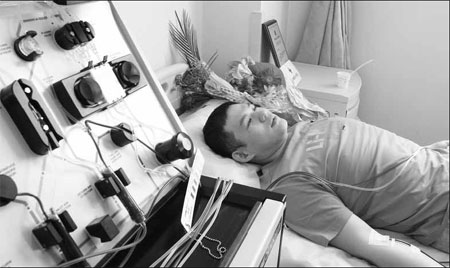5TH ANNUAL RALLY WILL BE HELD SEPT 22TH, 2012
5th ANNUAL RALLY FOR ALI
IN SEARCH OF A CURE FOR DIABETES
ALL DONATIONS WILL GO TO HARVARD STEM CELL INSTITUTE
PICNIC FOR A CAUSE
KRAUSE’S GROVE, 2 Beach Road, Halfmoon, NY
SATURDAY, SEPTEMBER 21, 2013
1:00 PM TO 6:00 PM ~ RAIN OR SHINE
$30.00 per adult ticket at gate - $20.00 for children under 12
includes donation to Harvard Stem Cell Institute.
5 hour picnic with soda, beer, games, raffles, 50/50, live music
JAMBONE - THE BEAR BONES PROJECT - BLUE HAND LUKE
SPECIAL GUEST APPEARANCE BY AWARD-WINNING IRISH STEP DANCER
GRACE CATHERINE MOMROW (Ali’s cousin)
Abundant food and dessert being served 1:00 p.m. to 5:00 p.m.
Those who wish to join a pre-picnic motorcycle cavalcade around the beautiful Tomhannock Reservoir in Ali’s honor will meet at the Troy Plaza on Hoosick Street at 10:00 A.M. for sign up and the cavalcade will kick off at 11:00 A.M. sharp.
For more info: https://www.facebook.com/Rally4Ali
For Further Information
Contact
For the Run, Wally Urzan
518-368-4826
For the Picnic & Cause
Alison Fisk
AFisk10302@aol.com
Wednesday, May 29, 2013
Saturday, May 11, 2013
| |||||||||||||||||
Thursday, May 9, 2013
Jilin student makes his second stem cell donation to ailing man
Updated: 2013-05-09 08:06
By Ou Hailin in Beijing and Han Junhong in Changchun (China Daily)
| |||||||||

Wang Yuanxiang in Changchun, Jilin province, donates blood stem cells for a 37-year-old leukemia patient on Monday. Wang, a 24-year-old student at the Jilin Institute of Physical Education, has been a regular blood donor for six years. Sheng Xuesong / for China Daily
|
Tuesday, May 7, 2013
Stem cell research provides hope for epilepsy cure
Read more: http://www.digitaljournal.com/article/349612#ixzz2Sd9BSHuj



 Reprinted with kind permission of
Reprinted with kind permission of 